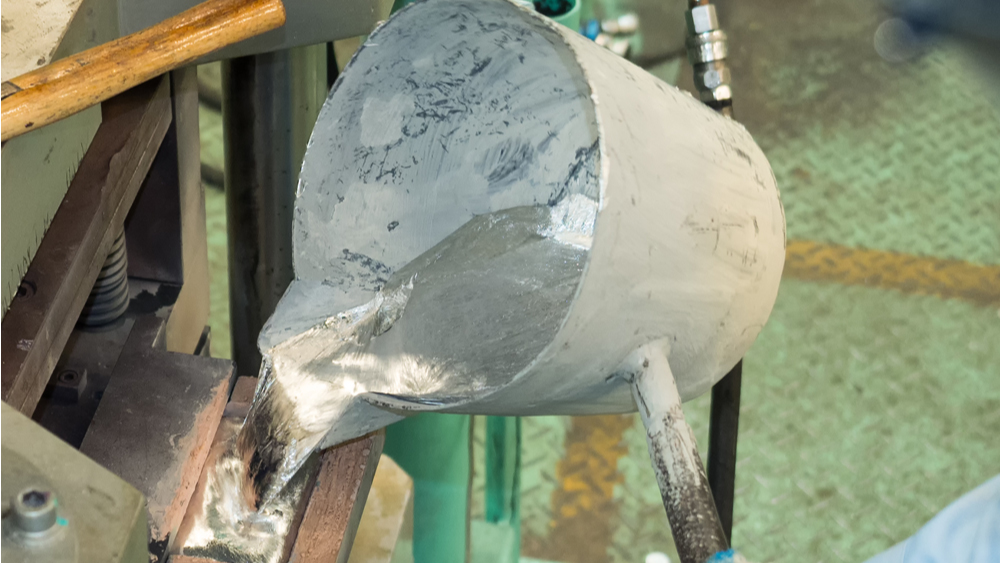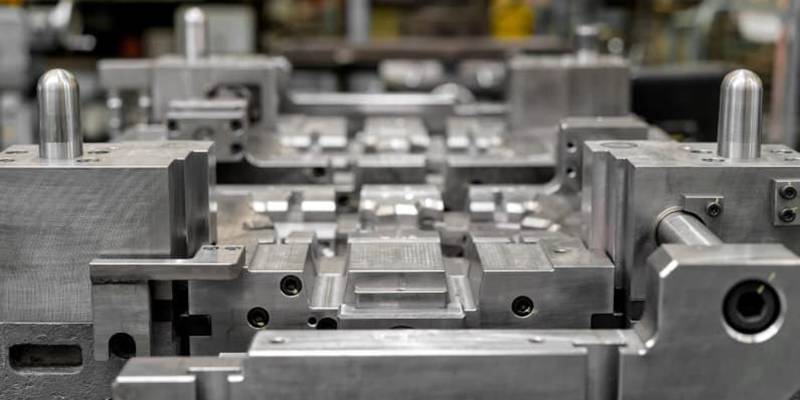Understanding the Procedures Associated With Aluminum Casting for High-Quality Manufacturing
The aluminum casting process is a complex yet crucial treatment for achieving high-grade manufacturing. It involves numerous phases, consisting of mold and mildew preparation, melting, putting, and cooling. Each step requires careful attention to detail to ensure and avoid flaws uniformity. Recognizing these treatments can substantially influence the end product's honesty. As one analyzes the nuances of mold choice and air conditioning methods, the value of each facet ends up being progressively clear. What factors truly dictate success in this intricate procedure?

The Aluminum Casting Process Overview
The aluminum casting procedure is a widely made use of production technique that transforms molten aluminum into different forms and components. This process begins by heating aluminum up until it reaches a liquid state, enabling it to move conveniently into mold and mildews. Depending on the wanted end item, different casting techniques can be employed, including sand casting, pass away casting, and financial investment casting. Each approach has its distinct advantages and applications, influencing factors such as manufacturing volume, dimensional precision, and surface coating.
As soon as the aluminum is put into the mold and mildew, it strengthens and cools, tackling the form of the cavity. After cooling, the actors item is removed from the mold, commonly calling for added procedures like trimming, machining, or surface therapy to accomplish the final specifications. Generally, the aluminum casting procedure is necessary in creating long lasting and detailed components for numerous industries, consisting of automotive, aerospace, and durable goods.
Preparing the Mold for Casting

Mindful prep work additionally entails cleaning up the mold to remove any kind of pollutants that might impact the casting procedure. A comprehensive assessment assurances that all components fit with each other properly, stopping misalignments throughout putting. In addition, using a release agent can aid ease the elimination of the finished product.
Eventually, meticulous attention to information throughout mold and mildew preparation establishes the structure for a successful casting procedure, affecting elements such as dimensional accuracy and surface quality of the aluminum components created.
Melting and Pouring Aluminum
Efficient melting and pouring of aluminum is vital for attaining high-quality spreadings. The procedure starts by selecting the ideal furnace, which need to provide reliable warm transfer and keep consistent temperatures. Numerous kinds of heating systems, such as induction or crucible furnaces, can be used based upon production requirements and volume.
The aluminum has to be heated to its melting factor, generally around 660 degrees Celsius (1220 levels Fahrenheit), while guaranteeing very little oxidation and contamination. To boost high quality, additives may be presented to enhance fluidness and decrease pollutants. Once fully thawed, the aluminum should be held at a stable temperature before putting.
Putting requires accuracy to stay clear of defects such as air pockets or inclusions. The usage of putting ladles and regulated putting methods adds to a smooth flow right into the mold. Appropriate execution of these actions is vital for creating castings with maximum architectural integrity and surface coating.
Cooling and Solidification Strategies
After pouring, the cooling and solidification of aluminum play an essential function in establishing the last properties of the casting (Aluminum Casting Company). Effective cooling strategies straight affect the microstructure, mechanical homes, and dimensional precision of the last item. Usual approaches include forced air cooling and water spray, which advertise uniform temperature circulation and lessen thermal slopes
The solidification process begins as the molten aluminum loses heat, changing from liquid to solid. The rate of cooling down influences grain dimension; slower air conditioning can result in bigger grains, potentially decreasing strength. Additionally, making use of chills-- steel inserts that take in heat-- can improve cooling prices in details areas, boosting general stability.
Controlled click now cooling systems are frequently executed to accomplish desired buildings, such as boosted ductility or strength, by handling the cooling curve. Proper strategies ensure trusted aluminum spreadings that meet stringent sector criteria.
Completing and High Quality Control Actions
Completing and quality assurance procedures are important to assure that aluminum castings meet the called for requirements and performance standards. After the casting process, components undertake numerous completing operations, consisting of machining, grinding, and sprucing up. These procedures enhance surface top quality, dimensional accuracy, and general aesthetic appeals.
Quality assurance procedures play a critical duty in guaranteeing product stability. Evaluation methods such as aesthetic assessments, dimensional checks, and non-destructive testing are employed to determine defects like porosity, surface abnormalities, or dimensional mistakes. In addition, detailed paperwork of each stage of manufacturing helps trace any type of problems back to their resource, enabling continual renovation.
Employing statistical process control (copyright) further assurances that manufacturing processes stay within specified limits, enhancing uniformity and dependability. By integrating finishing techniques and stringent top quality control measures, makers can attain high-quality aluminum spreadings that meet both market requirements and consumer expectations.
Regularly Asked Concerns
What Sorts Of Aluminum Alloys Are Best for Casting?
The most effective aluminum alloys for casting consist of 319, 356, and 413, recognized for their exceptional fluidity, deterioration resistance, and strength - Aluminum Foundry. These alloys are generally used in auto, aerospace, and numerous industrial applications for resilient parts
Exactly How Does Temperature Level Affect Aluminum Casting Top Quality?
Temperature level greatly influences aluminum casting quality; greater temperature levels can enhance fluidness however might result in oxidation, while reduced temperatures enhance detail however increase thickness. Achieving ideal temperature levels is necessary for balancing these opposing results during casting.
What Are Common Problems in Aluminum Castings?
Typical problems in aluminum castings consist of porosity, shrinkage, inclusions, cool shuts, and surface roughness. These problems arise from elements such as improper temperature level control, contamination, and poor mold and mildew design, impacting the end product's integrity and efficiency.
Can Aluminum Casting Be Reused?

Just How Does Aluminum Casting Contrast to Other Production Approaches?
Aluminum casting deals exceptional style versatility and product performance compared to approaches like creating or machining. Aluminum Casting Company. Its capability to generate complex forms lowers waste, enhancing overall production efficiency while navigate here keeping high-quality standards in finished items
The aluminum casting procedure is a complex yet crucial treatment for attaining high-grade production. The aluminum casting process is a widely made use of production strategy that changes molten aluminum into numerous forms and elements. Preparing the mold for casting is an important action that straight impacts the quality of the final aluminum product. Finishing and top quality control procedures are crucial to ensure that aluminum castings satisfy the called for specifications and efficiency requirements. Temperature greatly affects aluminum casting quality; greater temperatures can enhance fluidity but may lead to oxidation, while reduced temperature visite site levels boost information but rise viscosity.